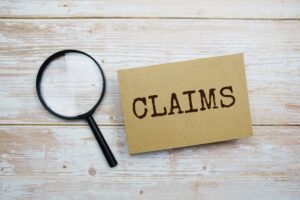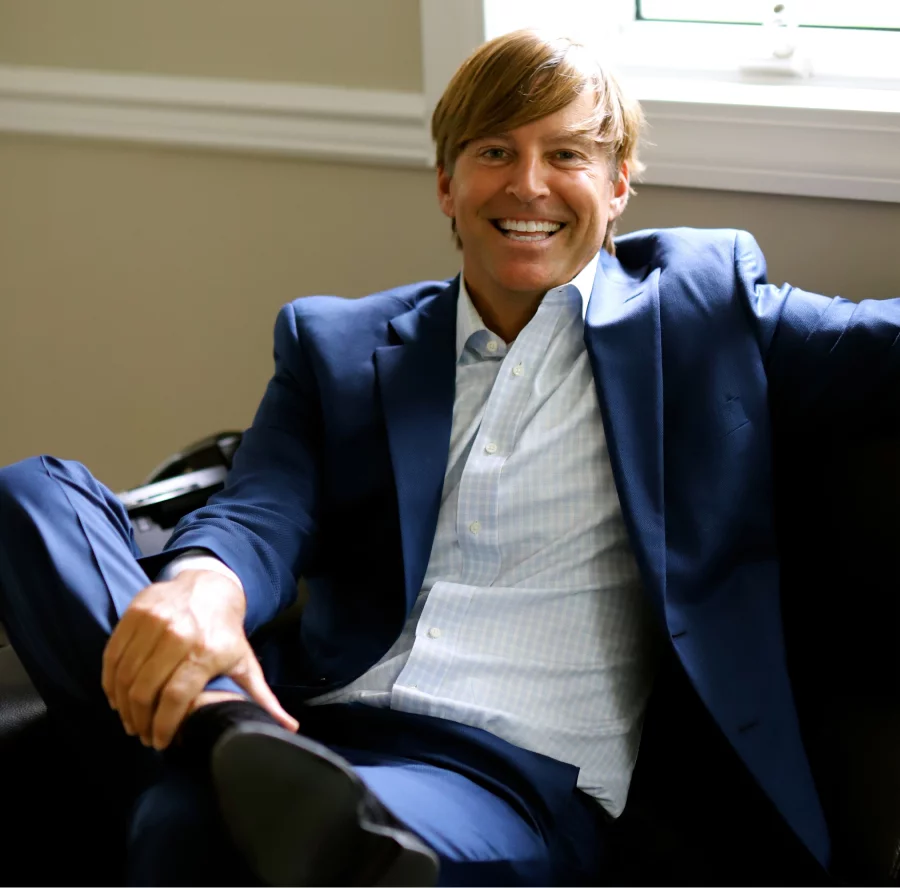What Role Does Physical Therapy Play In Preventing Nursing Home Falls?
Nursing Home AbuseNursing home falls can be a terrifying, devastating experience for residents and their families. These accidents often result in serious injuries and can have long-lasting effects on the individual’s quality of life.
Physical therapy is integral to helping guests avoid falls. Moreover, physical therapists may also create assessments of nursing home facilities to ensure the safety of residents.
However, after a nursing home fall, a physical therapist works on rehabilitating injured victims. They help individuals rebuild their bodily confidence, balance, and mobility, reducing their risk of future falls.
When nursing homes fails to provide adequate physical therapy to address an injury and prevent falls appropriately, the facility might be liable if a resident falls and suffers serious injuries. A fall for a senior can result in lengthy rehabilitation, costing the victim both money and time — the most valuable commodity of all in old age. If this happened to your loved one, do not wait to consult a nursing home injury lawyer as soon as possible.
Nursing Home Residents Regularly Need Physical Therapy
Physical therapy contributes to the overall well-being and prevention of falls in nursing home residents. As we age, our bodies naturally become weaker, leading to a higher risk of falls and accidents. This is especially true for elderly individuals who may already be struggling with mobility issues or chronic health conditions. Physical therapy can help address these challenges and improve the quality of life for nursing home residents.
One of the primary goals of physical therapy in nursing homes is to enhance balance, strength, and flexibility. Through targeted exercises and therapies, physical therapists can help residents improve their muscle tone and coordination, reducing the likelihood of falls. They can also provide guidance on using assistive devices such as walkers or canes to ensure safe mobility.
Physical therapy also plays a crucial role in pain management for nursing home residents. Chronic pain can often lead to decreased mobility and functional limitations, making individuals more susceptible to falls. By addressing pain through techniques such as manual therapy, therapeutic exercises, and modalities, physical therapists can help residents regain mobility and independence.
Additionally, physical therapists can assess and modify the living environment to minimize fall risks. They can recommend removing hazards or implementing safety measures, such as grab bars in bathrooms or non-slip mats in high-risk areas.
By addressing strength, balance, mobility, and pain management, physical therapists help residents maintain their independence and reduce the risk of falls. If your loved one resides in a nursing home, consider consulting a physical therapist to improve overall well-being and safety.
How Inadequate Physical Therapy Can Lead to Falls

Because physical therapy plays a critical role in preventing nursing home falls, it also means that inadequate physical therapy can have detrimental effects and potentially contribute to falls.
One of the main reasons why inadequate physical therapy can lead to falls is the lack of personalized treatment plans. Each resident in a nursing home has unique needs and capabilities, and a one-size-fits-all approach to physical therapy may not be effective.
Without individualized therapy plans, residents may not receive the specific exercises and interventions needed to address their balance and mobility issues. This can leave them vulnerable to falls, as their physical limitations are not properly addressed.
Another factor is the frequency and consistency of physical therapy sessions. Regular therapy sessions are essential for maintaining and improving strength, flexibility, and balance. However, if nursing homes fail to provide consistent therapy sessions or therapists do not monitor progress and make necessary adjustments to the treatment plan, the benefits of physical therapy may not be fully realized. This lack of follow-through can increase the risk of falls, as residents may not have the opportunity to build their strength and stability over time.
Additionally, the qualifications and expertise of the physical therapists themselves are critical. Inadequate training or lack of experience can result in improper assessment, ineffective treatment, and missed opportunities to address fall risks. Physical therapists need to understandnding of geriatric care and the specific needs of elderly individuals to provide appropriate interventions. Without this expertise, residents may not receive the necessary guidance and support to prevent falls.
Physical therapy is an essential component of fall prevention in nursing homes. However, physical therapy programs should be tailored to the individual needs of residents, consistently provided, and delivered by qualified therapists. When facilities fail to address these issues, nursing homes actually increase the risk of falls and create a more dangerous environment for their residents.
If you believe your loved one is receiving inadequate physical therapy, discuss the matter with their nursing home right away. If they have already fallen as a result, contact a nursing home lawyer.
Other Causes of Nursing Home Falls
Nursing home falls can occur for many other reasons beyond inadequate physical therapy, including avoidable environmental causes, lack of supervision, negligence, or understaffing. Understanding the different causes can help identify responsibility in the event of an accident and injuries. Here are some causes of a nursing home fall.
Environmental Causes

- Slippery Floors. Nursing homes should have proper flooring to prevent slips and falls. Failure to maintain or replace worn-out flooring can result in hazardous conditions.
- Lack of Safety Features. Nursing homes should have handrails, grab bars, and non-slip mats in place to ensure the safety of residents. Missing or inadequate safety features can increase the risk of falls.
- Poor Lighting. Insufficient lighting can make it difficult for residents to see obstacles and hazards, leading to falls.
- Cluttered Walkways. Objects left in walkways can pose a tripping hazard for nursing home residents. It is essential to maintain clean and clutter-free environments to prevent falls.
- Inadequate Furniture. Unstable or improperly placed furniture can contribute to falls. Furniture should be sturdy and arranged in a way that allows for easy movement and navigation.
- Lack of Mobility Aids. Residents who require mobility aids such as walkers or canes should have easy access to them. Neglecting to provide appropriate aid can increase the risk of falls.
Negligence or Understaffing
- Poor Training. Nursing home staff should receive comprehensive training on fall prevention techniques and strategies. Inadequate training can lead to improper assistance or lack of knowledge on assisting residents with mobility issues, increasing the risk of falls.
- Inadequate Supervision. Staff members must adequately supervise residents, especially those at higher risk of falling. Lack of supervision can lead to accidents and falls.
- Lack of Adherence to Protocols. Nursing homes should have protocols in place for fall prevention, including regular assessments, medication management, and care plans. Failure to adhere to these protocols can put residents at higher risk of falling.
Who Can Make a Claim for a Nursing Home Fall?

Nursing home falls can result in significant injuries and emotional distress. Various individuals can claim compensation if a nursing home fall occurs, depending on the incident.
The Victim
If the victim is of sound mind, they have the right to seek compensation for their injuries and any resulting damages. They can engage a lawyer to represent them and help them grasp the legal process.
Guardian or Power of Attorney
If the victim cannot make decisions due to cognitive impairment or other reasons, their guardian or power of attorney can pursue a claim on their behalf.
Family Members in Wrongful Death Claims
In cases where a nursing home fall leads to the death of a resident, their family members can initiate a wrongful death claim to seek compensation for the loss and any associated damages.
Evidence Is Important in a Nursing Home Fall Claim
When filing a claim for a nursing home fall, the key to success lies in the evidence you can provide. Building a strong case requires gathering all relevant documentation and testimonies to support your claim. Here are some forms of evidence that can strengthen your nursing home fall claim.
Medical Records
Detailed medical records documenting the resident’s physical therapy, injuries sustained in the fall, and the subsequent treatment are used in a nursing home fall claim.
Photos
Taking photographs of the scene where the fall occurred, any hazards present, and the resulting injuries can provide visual evidence to support your claim.
Witness Statements
Statements from other residents or staff who saw the fall happen or those who can testify to the conditions leading up to the fall can provide invaluable support for your claim.
Nursing Home Records
Requesting and reviewing the nursing home’s records, incident reports, and care plans can reveal any negligence or failure to follow proper procedures.
Incident Logs
The nursing home’s incident logs may contain relevant information regarding previous falls or incidents, highlighting a pattern of inadequate care or hazardous conditions.
Camera Footage of the Incident
Depending on the state’s surveillance laws, camera footage of the fall or the conditions leading up to it may be available. If available, this footage can be a powerful piece of evidence.
A lawyer experienced in nursing home fall claims can gather and present the necessary evidence to support your case.
Damages After a Nursing Home Fall
Winning a nursing home fall claim can result in compensation for various damages suffered due to the incident. These damages can be categorized into economic, non-economic, and punitive damages.
Economic Damages
Economic damages refer to the financial losses incurred as a result of the nursing home fall. They can include any of the following damages.
- Medical Expenses. Reimbursement for medical bills, hospital stays, surgeries, physical therapy, medications, and any other related healthcare costs — even taxi or bus rides.
- Future Medical Expenses. Compensation for anticipated future medical treatments, therapies, and ongoing care as a result of the fall-related injuries.
Non-Economic Damages
Non-economic damages account for the intangible losses resulting from a nursing home fall.
- Pain and Suffering. Compensation for physical pain, emotional distress, and psychological impact experienced as a result of the fall.
- Loss of Life Enjoyment. Damages for the loss of living quality and the inability to engage in activities and hobbies enjoyed before the fall.
- Loss of Consortium. For the impact the fall has on personal relationships, including the loss of companionship, guidance, and support.
Punitive Damages
Punitive damages punish the nursing home for gross negligence, willful misconduct, or intentional harm. They serve as a deterrent and go beyond compensating the victim for their losses.
How A Nursing Home Injury Attorney Can Help With Your Suffering

Dealing with the physical, emotional, and financial consequences of a nursing home fall can be overwhelming. Engaging the services of a nursing home injury lawyer can provide the support and guidance you need during this challenging time. Here’s how an attorney can assist you.
Legal Guidance
Attorneys handling nursing home fall cases have in-depth knowledge of the relevant laws and regulations. They can protect your rights in any issue surrounding the claim.
Gathering Evidence
Attorneys can gather the necessary evidence to support your claim. They know what information will help your case and how to obtain it.
Negotiating with Insurance Companies
Attorneys understand the tactics used by insurance companies to minimize settlements. They will advocate on your behalf, negotiate with insurers, and fight for the maximum compensation you deserve.
Mitigating Insurance Company Tactics
Nursing homes and their insurers may employ strategies to reduce their liability. An experienced attorney will be well-versed in these tactics and can counter them to ensure a fair outcome for you.
Call a Nursing Home Injury Attorney Today
If you or a loved one has experienced a nursing home fall, your next step should be to seek legal representation as soon as possible. A qualified attorney can help you understand your rights, assess the viability of your claim, and guide you through the legal process.
The good news is that there is no need to worry about any upfront costs — many attorneys work on a contingency basis, meaning they only get paid if they win your case. Consultations are free, allowing you to discuss your case with an attorney and determine the best course of action. Contact a nursing home injury lawyer today to protect your rights and seek the compensation you deserve.
The next step any victim should take is to consult a Nursing Home Injury Attorney who can guide them through the process and advocate for their best interests.

Nathan Hughey, an attorney and fourth-generation South Carolinian, founded Hughey Law Firm in 2007. Before that, he spent five years defending nursing homes and insurance companies. Leveraging his experience, he now advocates for those injured or wronged by such entities, securing over $290 million in verdicts and settlements.